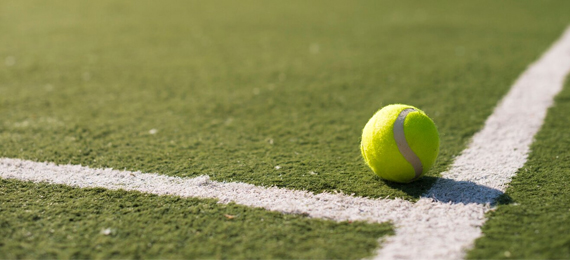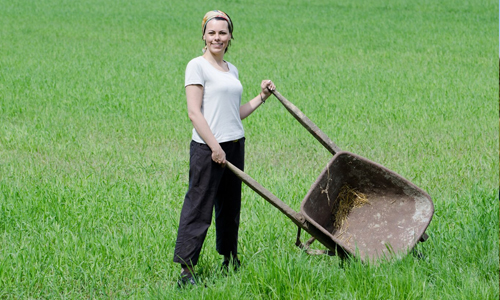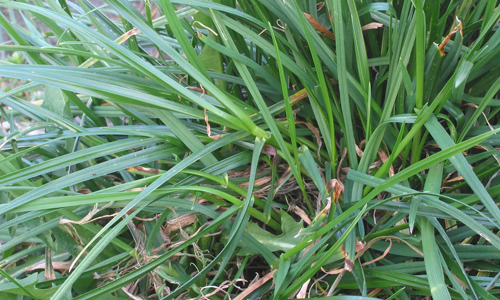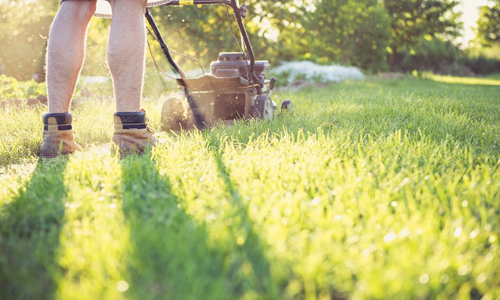
Tennis is frequently referred to as lawn tennis since it became popular while being played on the grass lawns of the former British nobility. Grass tennis courts still host a few of the modern tennis championships, such as Wimbledon, the most prestigious and oldest Grand Slam. The grass-court matches are quick and reward players with flawless technique, focus, and quickness. These courts are the fastest kind and are best suited for serve and volleyplay. Are you aware of the fastest serve ever recorded in Tennis?
Grass Tennis Courts – History
Tennis has a rich history intertwined with grass courts, dating back to its origins in 1891 France when it was played without rackets. Know the fascinating history of Tennis here. Over time, grass emerged as the favored surface due to its abundance and smooth texture. The term “lawn tennis” was officially coined in 1874 by Major Walter Clopton Wingfield, a Welsh inventor, who patented the game in Great Britain. Seeking to popularize tennis across the British Empire, Wingfield patented a new court design, marking a significant milestone in the sport’s evolution. Traditionally, three out of the four Grand Slam tournaments – Wimbledon, the US Open, and the Australian Open – were played on grass courts until the turn of the century. Initially, these courts comprised a mix of Perennial Ryegrass and creeping red fescue, with the former dominating 70% of the surface. However, in response to concerns that the surface favored servers too much, the All England Lawn Tennis Club (AELTC) transitioned the composition to almost entirely Perennial Ryegrass, resulting in a slightly slower bounce, aiming to maintain a fair balance between serving and receiving.
Differences between Grass and Clay Courts
Clay courts exhibit slower speed compared to grass courts, with clay being notably more abrasive. The ball adheres to the clay surface for a longer duration, resulting in increased spin. Grass courts demand meticulous maintenance, leading to higher upkeep costs compared to clay or hard courts. Clay surfaces require consistent moisture; in contrast, grass courts must be maintained dry.
What is the name of the oldest Grand Slam tennis tournament?
- A. Wimbledon
- B. French Open
- C. US Open
- D. Australian Open
Therefore, each surface, be it grass or clay, possesses its own set of advantages and drawbacks.
Grass Tennis Courts Surface:

What is the Best Grass for Tennis Courts?
Ultimately, the choice of grass depends on factors such as climate, soil type, maintenance capabilities, and desired playing characteristics. The best grass for tennis courts is typically a type of grass called perennial ryegrass.
- Perennial Ryegrass
It is known for its durability, resilience, and ability to withstand heavy foot traffic, making it ideal for sports fields and courts. It provides a fast and consistent playing surface, which is crucial for tennis. Additionally, it can handle frequent mowing and bouncing back quickly after use. It is best suited for shaded space or cooler regions.
- Bermuda Grass
It can also be suitable depending on the specific conditions and maintenance requirements of the tennis court. Bermudagrass is a popular choice for warmer climates.
How to Grow a Grass Court

Growing a grass court requires careful planning, preparation, and maintenance. Here’s a general guide on how to grow a grass court:
1. Seed Selection

Not all grass types are suitable for a grass court. You typically want a grass variety that can withstand heavy foot traffic and frequent mowing for tennis courts. Common choices include Bermuda grass, Kentucky bluegrass, and perennial ryegrass.
2. Soil Preparation
Before planting grass seed, prepare the soil properly. Remove any existing vegetation, rocks, and debris. Till the soil to a depth of at least 6-8 inches to loosen it and improve drainage.
3. Improve Drainage
Proper drainage is crucial for a healthy grass court. Ensure that the court is sloped slightly to allow water to drain away from the surface.
4. Watering
Grass watering needs to shift according to their surroundings since they grow up Seeds that were just planted or sod that was just installed need constant watering so that they can have their roots take position
5. Aeration
Periodically aerate the grass court to relieve soil compaction and improve air and water penetration to the roots.
6. Mowing

Once the grass is established, maintaining a regular height of around 1/2 to 3/4 inches is typical.
7. Fertilization
Apply a balanced fertilizer during the growing season to promote healthy growth and turf density.
8. Maintenance
Maintain the grass court regularly by addressing any bare spots, repairing damaged areas, free of weeds, and overseeding as needed.
Pros & Cons of Grass Tennis Courts
Grass tennis courts offer a unique playing experience compared to other surfaces like clay or hard courts. Here are some pros and cons of grass tennis courts:
| Pros | Cons |
| Grass courts are the fastest of all tennis surfaces. | Grass courts require high maintenance to keep them in good playing condition. |
| Perfect for players who prefer higher bouncing surfaces. | Grass court surfaces wear down throughout a tournament making it challenging for players to anticipate and adjust to shots. |
| Grass courts can be slippery, which can work to the advantage of players with good footwork and comfortable moving on the surface. | Heavy rain can make the surface slippery and unsafe for play, while prolonged dry spells can lead to hard, patchy surfaces. |
| Grass courts provide a visually appealing setting for tennis matches, adding to the game’s ambiance. | Grass courts are less common than other surfaces like clay or hard courts. |
Players Who Excelled on Grass Tennis Courts
Several notable players have showcased their prowess on grass tennis courts. Among them are Serena and Venus Williams, Boris Becker, Roger Federer, Pete Sampras, and Steffi Graf. Roger Federer stands out as the most accomplished male player on grass courts, boasting an impressive record of 19 grass court titles. Pete Sampras also merits recognition for his seven Wimbledon singles titles achieved over eight remarkable years.
Grass tennis courts offer a unique and challenging playing experience that tests the skills of players at all levels. From the historic grounds of Wimbledon to local club courts, the allure of grass surfaces continues to captivate tennis enthusiasts worldwide. Whether you’re a casual player or a seasoned professional, experiencing tennis on grass is a must for any fan of the sport. Read a lineup of the most famous tennis tantrums in history.
Grass Tennis Courts FAQ
1. How does a grass tennis court work?
Grass courts are fast, allowing balls to skim over them, favoring aggressive tennis tactics like serve-and-volley. However, maintaining the lawn is time-consuming, requiring weeding, trimming, cutting, and regular watering.
2. What is the grass court season in tennis?
The grass court season in tennis usually lasts between five and six weeks from June through July and it is a short period that is highly respected, peaking at Wimbledon Championships that are well-known.
3. Is tennis still played on grass?
Yes, grass is still used for playing tennis, but not often. This makes Wimbledon unique among all four Grand Slam events because it’s the only one with courts made of grass, which creates an engaging history.